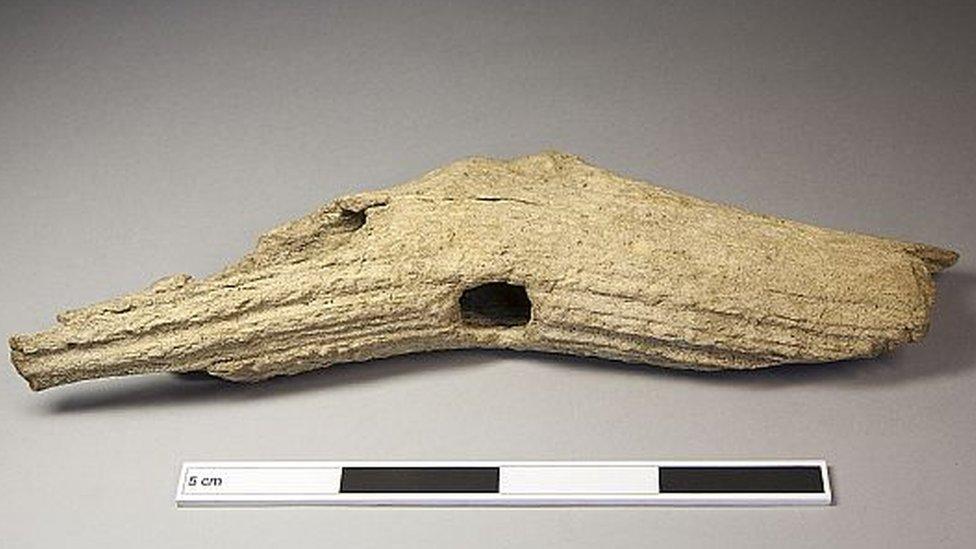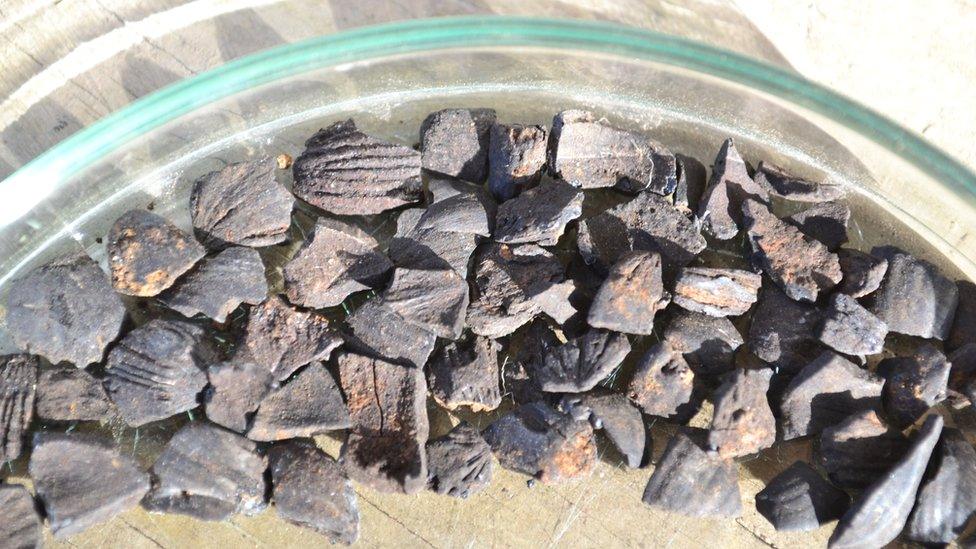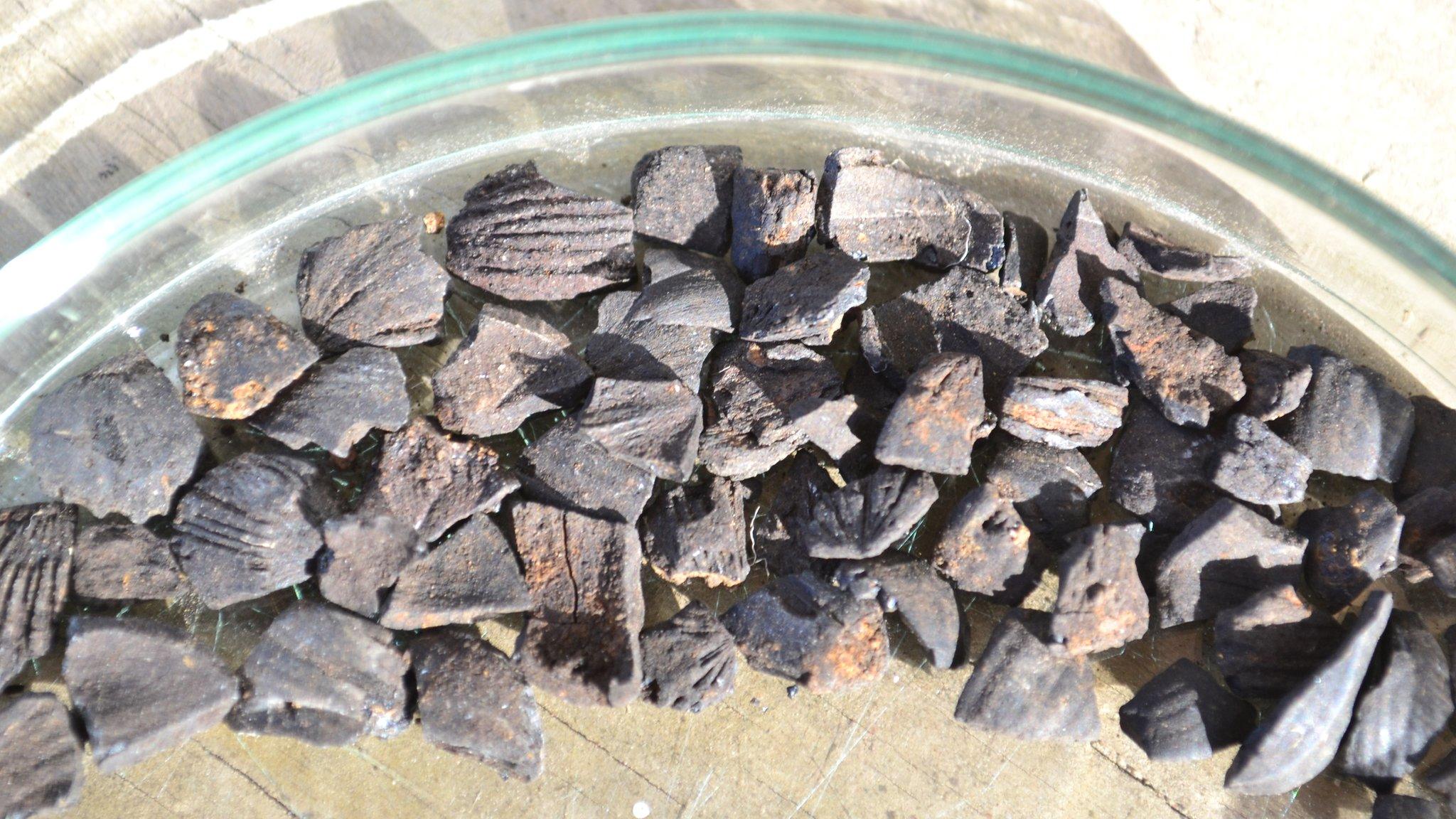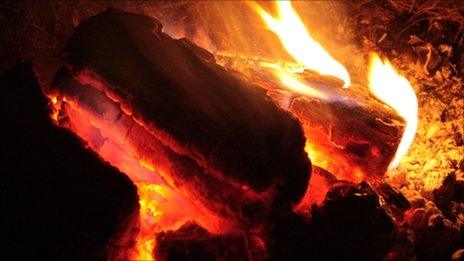Tools discarded 6,000 years ago found near Muir of Ord
- Published

The harpoon may have been used in seal hunts. Image courtesy of AOC Archaeology and TTT
A harpoon or spear along with axes made by hunter-gatherers in the Highlands 6,000 years ago have been found.
The tools made from red deer antlers were uncovered at a Mesolithic site at Tarradale near Muir of Ord.
The harpoon may have been used in hunts of seals and wildfowl on the mudflats of what is today the Beauly Firth.
Archaeologists believe the items were thrown away when a settlement in the area was abandoned, possibly as sea levels rose.
'Highly significant'
The archaeological finds were made by Tarradale Through Time: Community Engagement with Archaeology in the Highlands, external.
It is a major multi-period archaeology project based at Tarradale and funded by the Heritage Lottery Fund and Historic Environment Scotland.

The axes made from deer antler have been described as a rare discovery
The three-year project started in 2017, the same year the tools were found during excavations of a raised beach, an area of land about 9m (29ft) above the present coastline of the firth.
Those involved in the project have described the Mesolithic finds as "highly significant".
Hazelnut snack
They said the antler axes - called T-axes because of their distinctive shape - were "very rare finds" and only a handful been found in Scotland previously.
Last year's excavation also uncovered a large shell midden, a place where the hunter-gatherers threw the uneaten remains of shellfish.

Another of the T axes found at Tarradale
Mesolithic finds have been made elsewhere in the Highlands in recent years.
They have included the remains of hazelnuts eaten by some of Skye's earliest inhabitants.
Hazelnuts were a favourite snack of Mesolithic hunter-gatherers, according to archaeologists at the University of the Highlands and Islands (UHI).
The shells found in 2015 at an excavation above Staffin Bay were believed to be 8,000-years-old.

Some of the nut shells found during an excavation above Staffin Bay in Skye
UHI carried out the dig along with Staffin Community Trust, school children and volunteers.
Four years earlier, archaeologists said they believed the remains of burned oak uncovered at the site of the first Sainsbury's in the Highlands was evidence of an ancient "rest stop".
Radiocarbon dating of the hearth, found in an investigation conducted before the supermarket was built in Nairn, placed it in the Mesolithic period.
- Published22 October 2015

- Published19 July 2011
